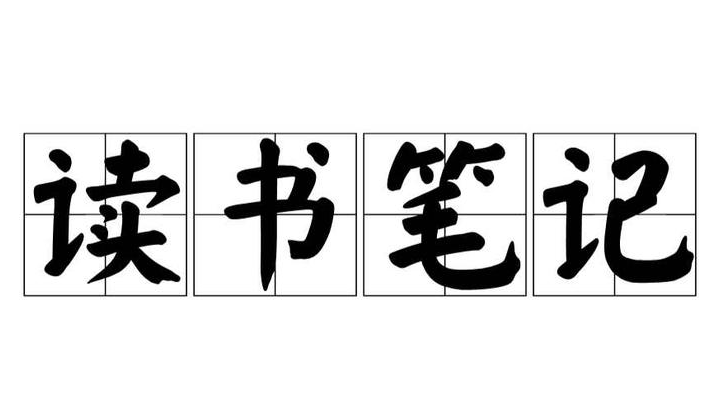VUE-Store
VUE-Store引言Store(仓库)的概念引向于VUEX的应用中,store基本上就是一个容器,它包含着你的应用中大部分的状态。vue的状态存储是响应式的,当vue组件从store中读取状态的时候,若store的状态发生变化,那么相应的组件也会相应的高效更新。并且不能直接的改变store中的状态,改变store中的状态的唯一途径就是显式的提交,这样使得我们可以方便的追踪每一个状态的变化。我们通
VUE-Store
引言
Store(仓库)的概念引向于VUEX的应用中,store基本上就是一个容器,它包含着你的应用中大部分的状态。vue的状态存储是响应式的,当vue组件从store中读取状态的时候,若store的状态发生变化,那么相应的组件也会相应的高效更新。并且不能直接的改变store中的状态,改变store中的状态的唯一途径就是显式的提交,这样使得我们可以方便的追踪每一个状态的变化。
我们通过官方文档的一个小例子,来熟悉一个store的使用。
一开始我们先利用webpack来构建一个vue的基本项目,

store是基于vuex的核心概念,首先需要安装vuex,这里我直接在终端输入npm install vuex --save ,即安装完成,
在目录上创建store文件,为了保存项目结构的规整,在之下创建store.js文件,导入相关的语句:
import Vue from 'vue'
import Vuex from 'vuex'
Vue.use(Vuex)
于此同时,在main.js进行注册。
我们继续完善这个小栗子:
import Vue from 'vue'
import Vuex from 'vuex'
Vue.use(Vuex)
// 创建一个store
export default new Vuex.Store({
// 设置全局访问的state对象
state: {
count: 25,
},
// 修改状态
mutations: {
increment(state) {
state.count++
}
}
})
在组件中直接获取值,感受一下:
<template>
<div>
<h1>{{this.$store.state.count}}</h1>
<button @click="increment">点击我!</button>
</div>
</template>
<script>
export default {
name: "main",
methods:{
increment(){
this.$store.commit('increment')
console.log(this.$store.state.count)
}
}
}
</script>
<style scoped>
</style>

参考官方的例子,这个简单的计数器被实现了。不过到这里,感觉类似于全局变量。接着往下看。
相关概念
state
vuex使用的单一状态树,即一个对象包含了全部的应用层级,每个应用将仅仅包含一个store实例,单一状态树让我们能够直接地定位任一特定的状态片段,在调试的过程中也能轻易地取得整个当前应用状态的快照。
从store实例中读取状态
// 创建一个 Counter 组件
const Counter = {
template: `<div>{{ count }}</div>`,
computed: {
count () {
return this.$store.state.count
}
}
}
每当store.state.count变化的时候,都会重新求取计算属性,并且触发更新相关联的DOM。
Vuex通过store选项,提供了一种机制将状态从根组件注入到每一个子组件中。通过store选项,提供了一种机制将状态从跟组件注入到每一个子组件,可以通过this.$store.state.count获取到。
mapState辅助函数
当一个需要获取多个状态时候,将这些状态都声明为计算属性会繁杂,vuex中提供了mapState来帮我们。我们改变一下上述的例子
<template>
<div>
<h1>{{this.$store.state.count}}</h1>
<button @click="increment">点击我!</button>
<h1>我在这{{count}}</h1>
<h1>我在这{{count1}}</h1>
<h1>我在这{{LocalState}}</h1>
</div>
</template>
<script>
import {mapState} from 'vuex';
export default {
name: "main",
data: function(){
return {
LocalCount:8,
}
},
computed: mapState({
count:state => state.count,
count1 :'count',
LocalState(state){
return state.count +this.LocalCount
}
}),
methods:{
increment(){
this.$store.commit('increment')
console.log(this.$store.state.count)
}
}
}
</script>
<style scoped>
</style>
结果:

getter
我们需要从state中派生出一些状态属性,这个时候就可以选择使用getter。
废话不说,直接上例子,就会明白:
import Vue from 'vue'
import Vuex from 'vuex'
Vue.use(Vuex)
export default new Vuex.Store({
// 设置全局访问的state对象
state: {
todos: [
{ id: 1, text: '...', done: true },
{ id: 2, text: '...', done: false },
{ id: 3, text: '...', done: true },
{ id: 4, text: '...', done: true },
{ id: 5, text: '...', done: true },
{ id: 6, text: '...', done: true },
{ id: 7, text: '...', done: true },
{ id: 8, text: '...', done: true },
]
},
getters: {
doneTodos: state => {
// 获取列表中done属性为true的
return state.todos.filter(todo => todo.done)
}
}
})
组件中使用:
<template>
<div>
<h1>{{this.$store.state.count}}</h1>
<button @click="increment">点击我!</button>
<h1>我在getter--->{{doneTodosCount}}</h1>
</div>
</template>
<script>
import {mapState} from 'vuex';
export default {
name: "main",
data: function(){
return {
LocalCount:8,
}
},
computed:{
doneTodosCount () {
return this.$store.state.todos.filter(todo => todo.done).length
}
},
methods:{
increment(){
this.$store.commit('increment')
console.log(this.$store.state.count)
}
}
}
</script>
<style scoped>
</style>
也通过属性访问。通过this.getters.donTodos就可以。
Mutation
这个概念,我们在第一个例子中就已经进行使用了,
直接按照官方文档的说法:
更改 Vuex 的 store 中的状态的唯一方法是提交 mutation。Vuex 中的 mutation 非常类似于事件:每个 mutation 都有一个字符串的 事件类型 (type) 和 一个 回调函数 (handler)。这个回调函数就是我们实际进行状态更改的地方,并且它会接受 state 作为第一个参数,
直接调用以相应的 type 调用 store.commit 方法:
action
Action 类似于 mutation,不同在于:
- Action 提交的是 mutation,而不是直接变更状态。
- Action 可以包含任意异步操作。
让我们来注册一个简单的 action:
const store = new Vuex.Store({
state: {
count: 0
},
mutations: {
increment (state) {
state.count++
}
},
actions: {
increment (context) {
context.commit('increment')
}
}
})
Action 函数接受一个与 store 实例具有相同方法和属性的 context 对象,因此你可以调用 context.commit 提交一个 mutation,或者通过 context.state 和 context.getters 来获取 state 和 getters。当我们在之后介绍到 Modules 时,你就知道 context 对象为什么不是 store 实例本身了。
实践中,我们会经常用到 ES2015 的 参数解构 (opens new window)来简化代码(特别是我们需要调用 commit 很多次的时候):
actions: {
increment ({ commit }) {
commit('increment')
}
}
分发 Action
Action 通过 store.dispatch 方法触发:
store.dispatch('increment')
乍一眼看上去感觉多此一举,我们直接分发 mutation 岂不更方便?实际上并非如此,还记得 mutation 必须同步执行这个限制么?Action 就不受约束!我们可以在 action 内部执行异步操作:
actions: {
incrementAsync ({ commit }) {
setTimeout(() => {
commit('increment')
}, 1000)
}
}
Actions 支持同样的载荷方式和对象方式进行分发:
// 以载荷形式分发
store.dispatch('incrementAsync', {
amount: 10
})
// 以对象形式分发
store.dispatch({
type: 'incrementAsync',
amount: 10
})
来看一个更加实际的购物车示例,涉及到调用异步 API 和分发多重 mutation:
actions: {
checkout ({ commit, state }, products) {
// 把当前购物车的物品备份起来
const savedCartItems = [...state.cart.added]
// 发出结账请求,然后乐观地清空购物车
commit(types.CHECKOUT_REQUEST)
// 购物 API 接受一个成功回调和一个失败回调
shop.buyProducts(
products,
// 成功操作
() => commit(types.CHECKOUT_SUCCESS),
// 失败操作
() => commit(types.CHECKOUT_FAILURE, savedCartItems)
)
}
}
注意我们正在进行一系列的异步操作,并且通过提交 mutation 来记录 action 产生的副作用(即状态变更)。
在组件中分发 Action
你在组件中使用 this.$store.dispatch('xxx') 分发 action,或者使用 mapActions 辅助函数将组件的 methods 映射为 store.dispatch 调用(需要先在根节点注入 store):
import { mapActions } from 'vuex'
export default {
// ...
methods: {
...mapActions([
'increment', // 将 `this.increment()` 映射为 `this.$store.dispatch('increment')`
// `mapActions` 也支持载荷:
'incrementBy' // 将 `this.incrementBy(amount)` 映射为 `this.$store.dispatch('incrementBy', amount)`
]),
...mapActions({
add: 'increment' // 将 `this.add()` 映射为 `this.$store.dispatch('increment')`
})
}
}
组合 Action
Action 通常是异步的,那么如何知道 action 什么时候结束呢?更重要的是,我们如何才能组合多个 action,以处理更加复杂的异步流程?
首先,你需要明白 store.dispatch 可以处理被触发的 action 的处理函数返回的 Promise,并且 store.dispatch 仍旧返回 Promise:
actions: {
actionA ({ commit }) {
return new Promise((resolve, reject) => {
setTimeout(() => {
commit('someMutation')
resolve()
}, 1000)
})
}
}
现在你可以:
store.dispatch('actionA').then(() => {
// ...
})
在另外一个 action 中也可以:
actions: {
// ...
actionB ({ dispatch, commit }) {
return dispatch('actionA').then(() => {
commit('someOtherMutation')
})
}
}
最后,如果我们利用 async / await (opens new window),我们可以如下组合 action:
// 假设 getData() 和 getOtherData() 返回的是 Promise
actions: {
async actionA ({ commit }) {
commit('gotData', await getData())
},
async actionB ({ dispatch, commit }) {
await dispatch('actionA') // 等待 actionA 完成
commit('gotOtherData', await getOtherData())
}
}
一个
store.dispatch在不同模块中可以触发多个 action 函数。在这种情况下,只有当所有触发函数完成后,返回的 Promise 才会执行。
参考资料
更多推荐
 已为社区贡献1条内容
已为社区贡献1条内容









所有评论(0)